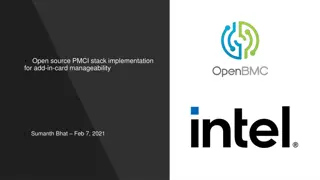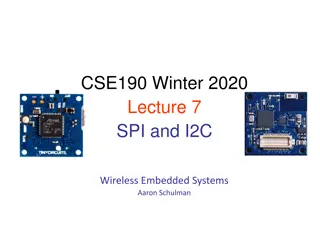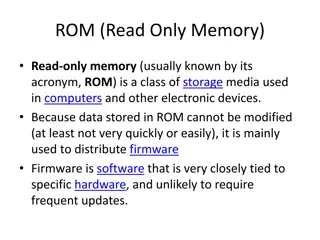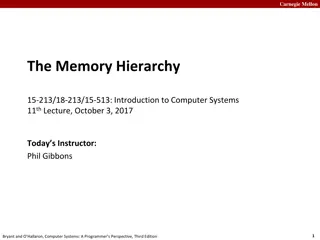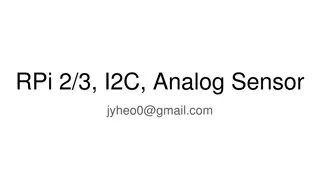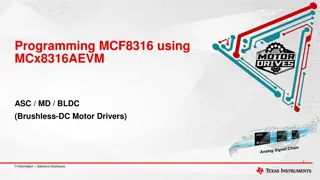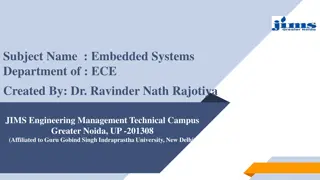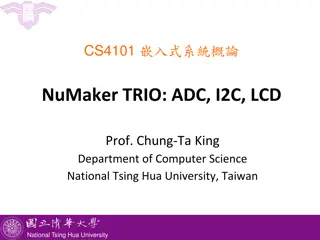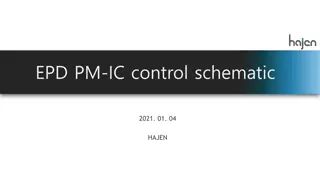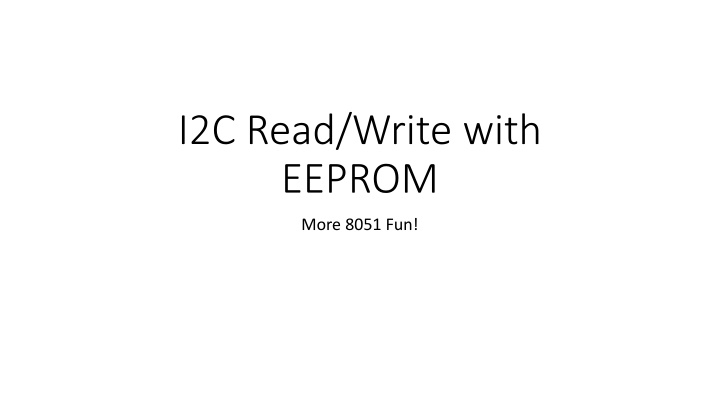
Performing I2C Read/Write Operations with EEPROM - 8051 Tutorial
Learn how to perform WRITE and READ operations on small EEPROM chips using I2C communication protocol with an 8051 microcontroller. Follow step-by-step instructions, including background information, addressing, data writing, and reading processes. See examples of byte writing and reading using a logic analyzer.
Download Presentation

Please find below an Image/Link to download the presentation.
The content on the website is provided AS IS for your information and personal use only. It may not be sold, licensed, or shared on other websites without obtaining consent from the author. If you encounter any issues during the download, it is possible that the publisher has removed the file from their server.
You are allowed to download the files provided on this website for personal or commercial use, subject to the condition that they are used lawfully. All files are the property of their respective owners.
The content on the website is provided AS IS for your information and personal use only. It may not be sold, licensed, or shared on other websites without obtaining consent from the author.
E N D
Presentation Transcript
I2C Read/Write with EEPROM More 8051 Fun!
Goal: Perform WRITE and READ operations on small EEPROM chips using I2C
First, some background info from the data sheet http://ww1.microchip.com/downloads/en/DeviceDoc/24AA02- 24LC02B-24FC02-Data-Sheet-20001709L.pdf 24LC02B-I/P-ND IC EEPROM 2K I2C So, to write, send start bit, then 10100000 for a write, then send/read ACK. Read would be 10100001.
A0 This is how to send a single data write. Send start, write command, address, the data, and then stop. You can send up to eight bytes at a time, but keeping it simple here, one byte at a time.
When writing multiple bytes, they recommend polling to check if the device is busy from a previous write. I can see why after playing around it takes awhile to perform the write operation on the order of several milliseconds. So, to maximize throughput, you should implement their recommended algorithm, which sends an ACK as soon as its ready. For this tutorial, I just included a sufficient delay between write commands.
There are three types of reads that can be done, current, random, and sequential. Current just reads the last address in the address register. A random read, demonstrated here, allows you to set the address register and then read its value. You can also read a stream of bytes in a sequential read.
Setup 8051 SCL = P0.0 SDA = P0.1
Byte writing illustrated with Logic Analyzer. Write location 0x00 value E1 Write location 0x00 value 23
Byte reading illustrated with Logic Analyzer. Read location 0x00 returns E1 Read location 0x01 - returns 23
Code highlights - write EEPROM Write uses EEPROM_WRITE function; first setup value to write, and address to write to This is the write function calls I2C_Start, sends write command, sends address, then sends data to write, and then stops.
Code highlights - read Load R2 with address, then call EEPROM_READ byte read will be stored in ACC. Read function sends I2C start, sends write command, sends address to address reg, reinitializes I2C and sends another start signal, then sends read command and reads the byte from the EEPROM over I2C. Then a stop signal is sent.


